
There are very few sites anywhere in the world that authentically reflect the history of their respective countries, and while Serbia's Golubac Fortress is relatively anonymous on global scale, it cannot be overstated how much this citadel is nationally significant. Perching on the craggy Serbian bank of the Danube River, at the country's eastern side, this medieval fortress played a major historic role for centuries as its strategic location, adjacent to the Iron Gate Gorge, the Danube's narrowest point, was indispensable for the numerous regional empires, all of which engaged in bloody battles over its dominance. Nowadays, Golubac is one of the most popular attractions among Serbs, and yet, despite its beauty and setting, it still managed to evade the massive swarms of international visitors.
Following the declaration by the Serbian government of Golubac Fortress as a tourist-oriented area in 2011, funds from different sources, most notably the EU, were raised and allocated for the reconstruction of the fortress, which at that point suffered from a great deal of damage.
Besides the much need restoration works, a visitor center (on the photo below) was opened to handle the growing number of domestic tourists who visit the site.
The fortress is adjacent to Djerdap National Park, one of Serbia’s most spectacular protected areas, that can easily be incorporated into one day trip.
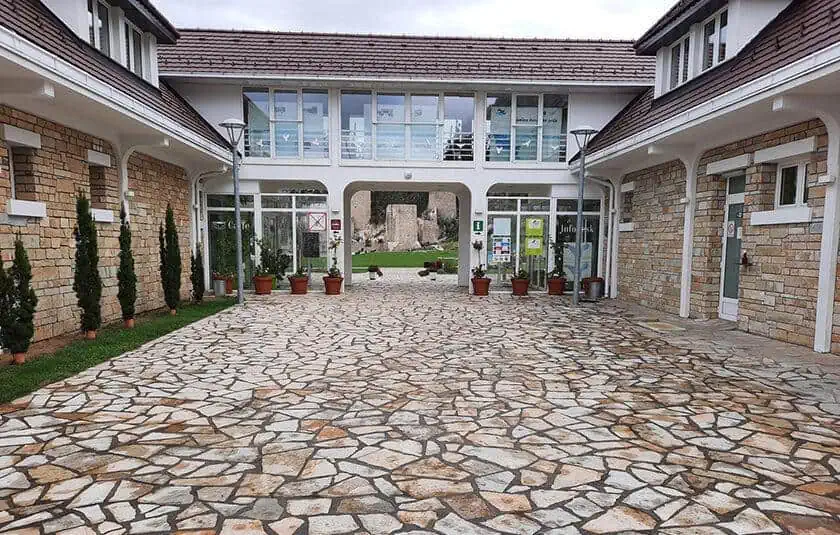
photography by: Omri Westmark
The fortress, despite the incalculable number of battles that took place within it, withstood for centuries relatively intact. However, in the 1930’s, a major regional road crossed through the complex, steadily weakening its structural integrity and polluting with smog its stone-made towers.
Few decades afterwards, during the late 1960’s, a hydroelectric dam was constructed across the Danube, inundating the lower parts of fortress, eventually submerging some of its ramparts underwater. Whereas the latter couldn’t be reversed, the road was redirected through a newly built tunnel that runs parallelly to the former route.
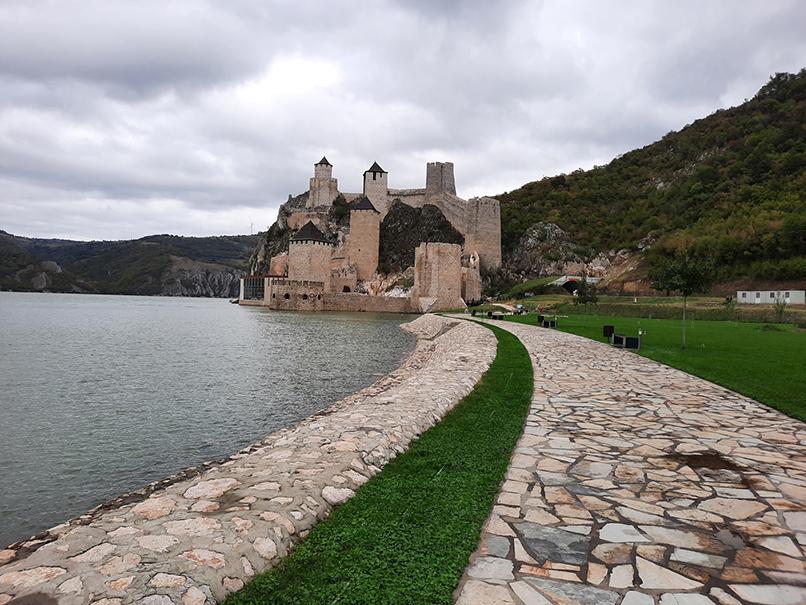
photography by: Omri Westmark
As of 2021, some of the restoration and reconstruction works are still going on, yet the fortress is already witnessing a visual renaissance, proudly stands as a vestige of medieval Serbian resistance and defiance against foreign superpowers that no longer exist.

photography by: Omri Westmark
The formidable fort is accompanied by a well-kept garden, where manicured lawn and flower beds provide visitors with a pleasant scenery as they’re making their way into the site.
According to a local legend, the fort is named after Golubana, a young girl from one of the nearby villages. Golubana allegedly refused to enter the harem of a regional Ottoman ruler, who in response, tied up the girl to a rock that juts out from the river in front of the fortress, ultimately inflicting her with a slow and painful death.
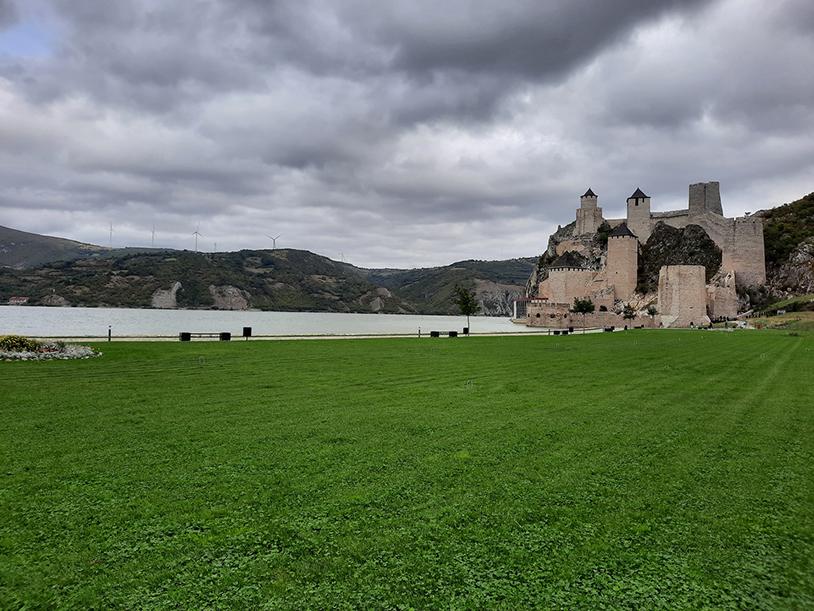
photography by: Omri Westmark
Each and every time you gaze at the other bank of the Danube River, you actually look at another country, Romania, as the river partly serves as a natural international border between the two countries.
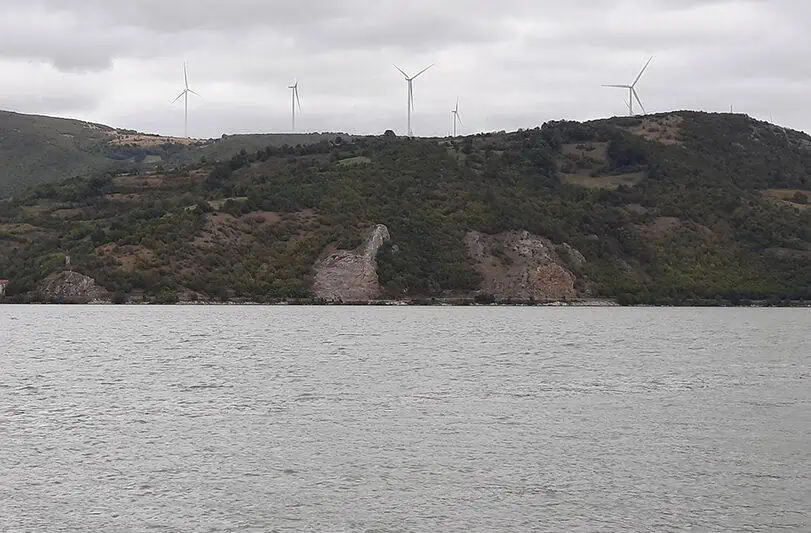
photography by: Omri Westmark
The Golubac Fortress at its fullest glory, reminiscent of a medieval Manhattan with its 9 towers soaring along the Danube riverfront.
The main entrance gate sits alongside tower no.8, both of which belong to the lower compound of the outer fortress, a newer part that was added at later stages. The tower’s main function was defensive, however, its first and second stories were most likely used to store food and weaponry.
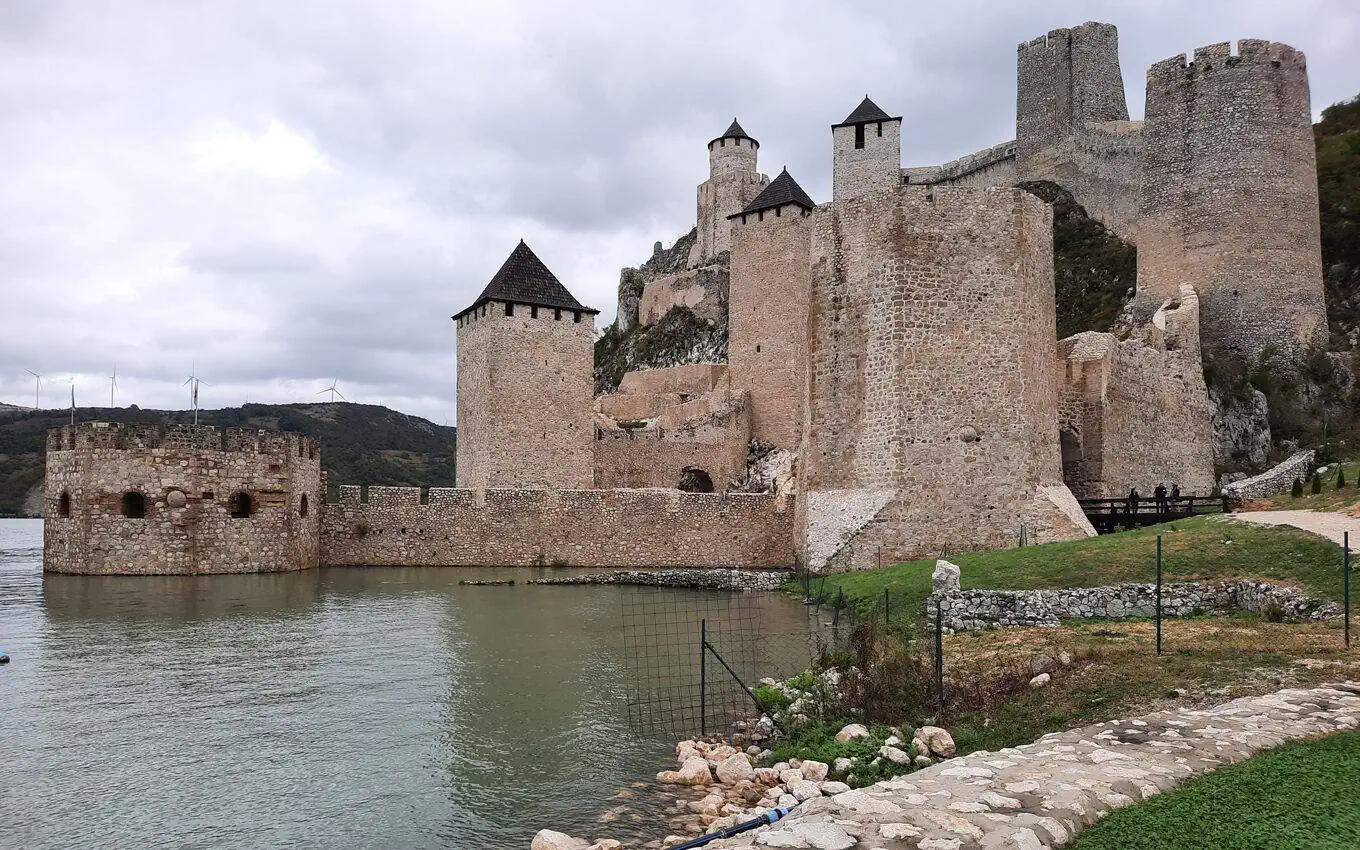
photography by: Omri Westmark
Surprisingly, the early past of Golubac is shrouded in mystery as no one really knows when and by who the fortress was originally built, albeit most historians agree that either the Bulgarians, Hungarians or the Serbs constructed it somewhere throughout the 14th century.
The fort initially had fewer towers, while more towers and ramparts were added later by the Ottomans and other foreign powers who controlled the area.
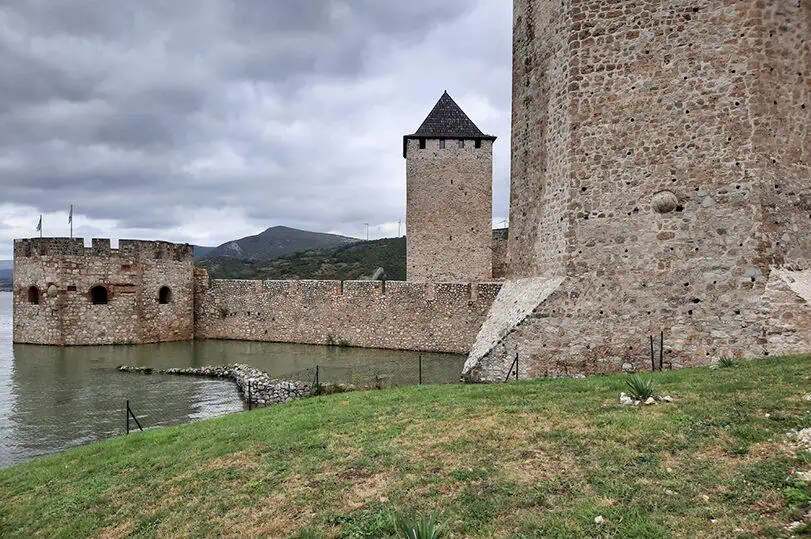
photography by: Omri Westmark
The gate to the fort’s inner part, adjoined to Tower no.5. The tower served as a fortified stronghold, shielding Golubac from numerous attacks. It was constructed during the second phase, most probably during the reign of prince Stefan Lazarević, who was the ruler of Serbia during the late 14th century and early 15th century. Beside its military role, the tower was also utilized for residence, as recently discovered toilets and fireplace suggest.
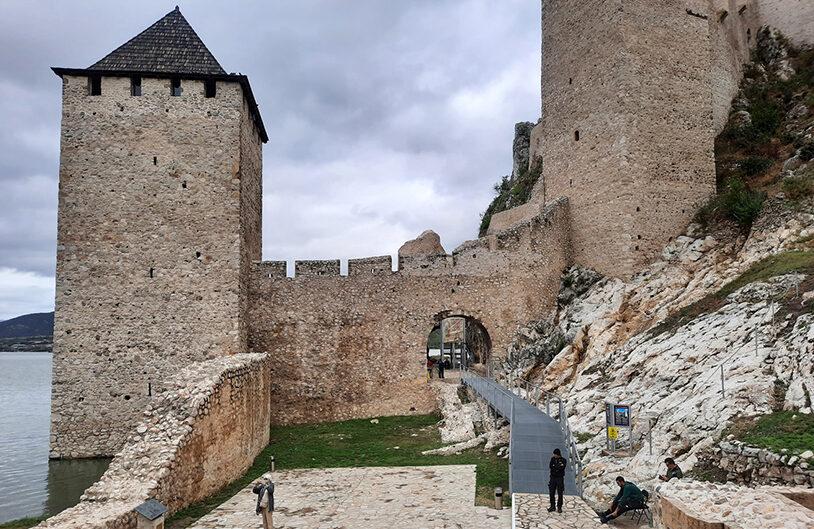
photography by: Omri Westmark
The main walkway that crosses Golubac is often supplemented with a modern-day metal lattice structure, providing access for disabled people as well as large groups of visitors that walk in line.
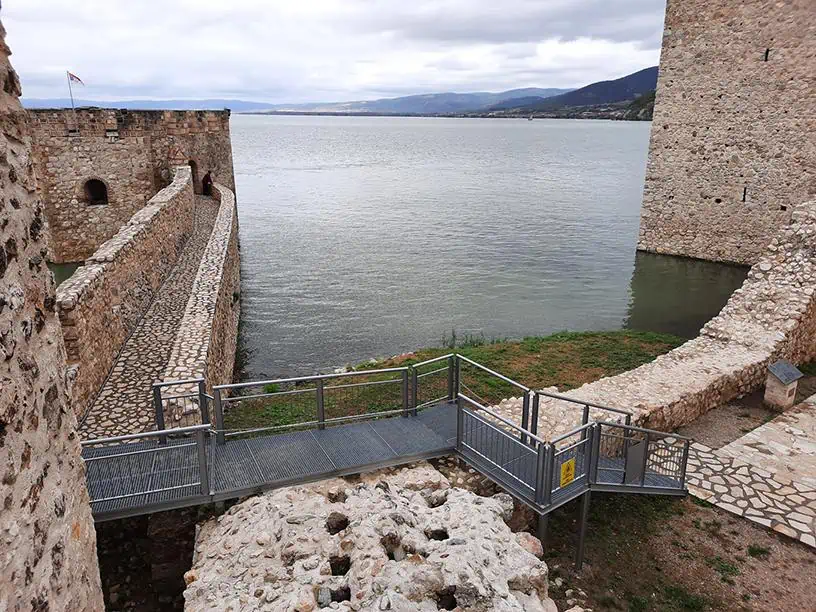
photography by: Omri Westmark
The visitor center and entrance garden (on the left), and Towers no.5 and no.4 (on the right) as both of which are seen from Tower no.8, whose roof is open for visitors.
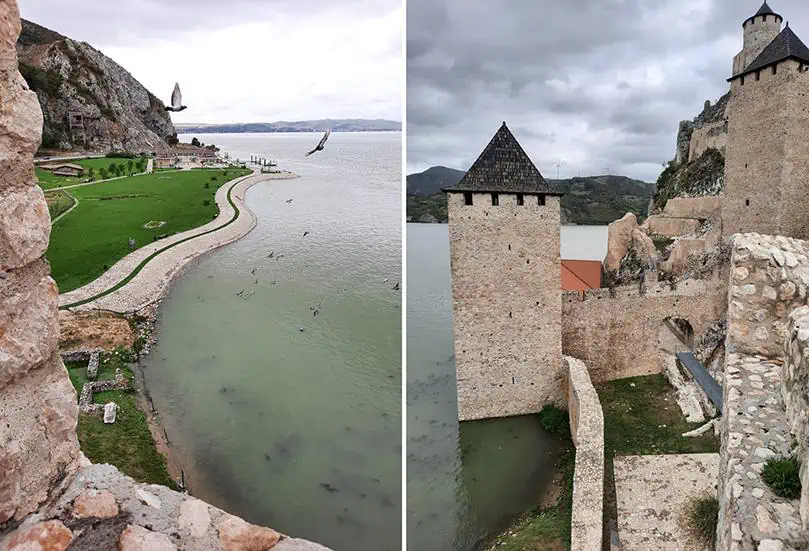
photography by: Omri Westmark
The citadel as it seen from the top of Tower no.8, interestingly, Tower no.5 (the building on the right side) is the only tower in Golubac to originally have a square base. All other towers had a rectangular base that was later fortified to withstand the more sophisticated and deadly artillery.
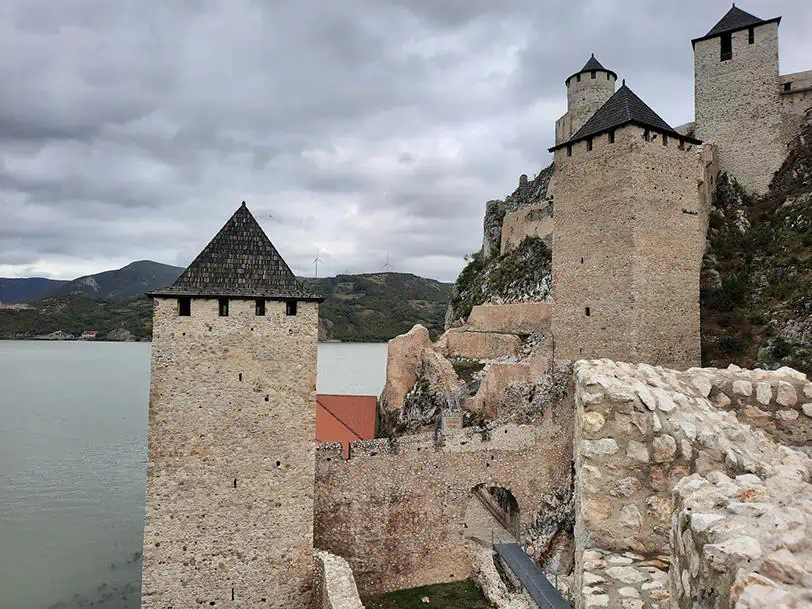
photography by: Omri Westmark
Tower no.9, also known as the Cannon Tower, was added by the Ottomans. As the name suggests, it was used as an emplacement for cannons, most likely to protect the fort and nearby harbor from any vessels attacking from the Danube. Following the damming of the river, the water level was elevated, consequently submerging parts of the tower, making it completely surrounded by water.
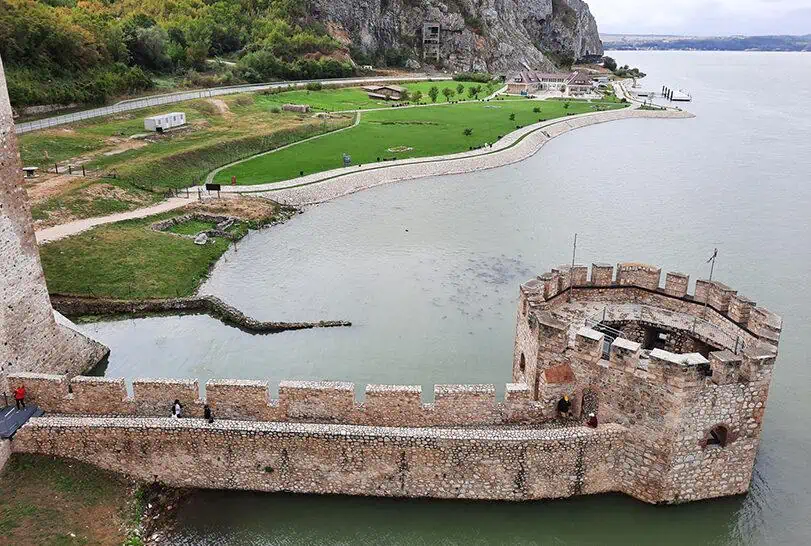
photography by: Omri Westmark
The Cannon Tower as it seen from Tower no.8 and vice versa.
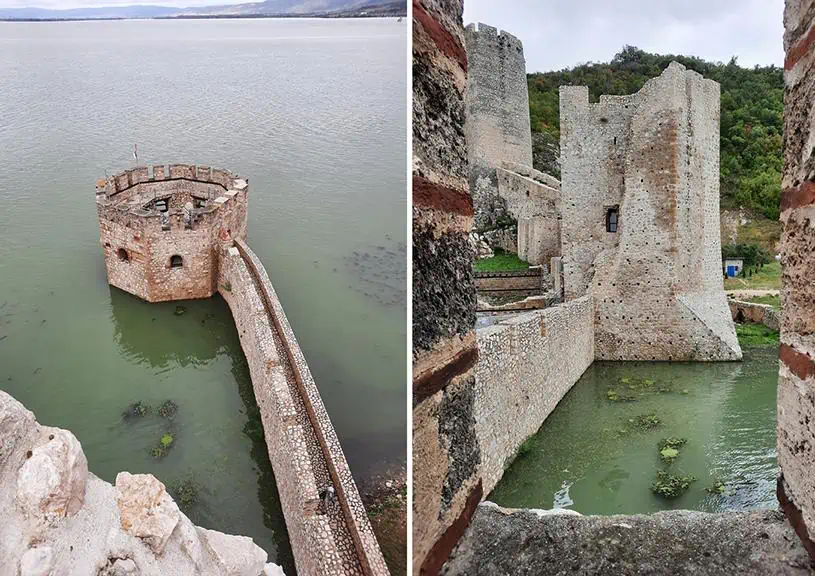
photography by: Omri Westmark
The stone-paved walkway that connects the rest of Golubac with the Cannon Tower provides a great opportunity to catch some spectacular angles of the whole complex, while postulating how all belligerent sides throughout history fought battle upon battle to control over it.
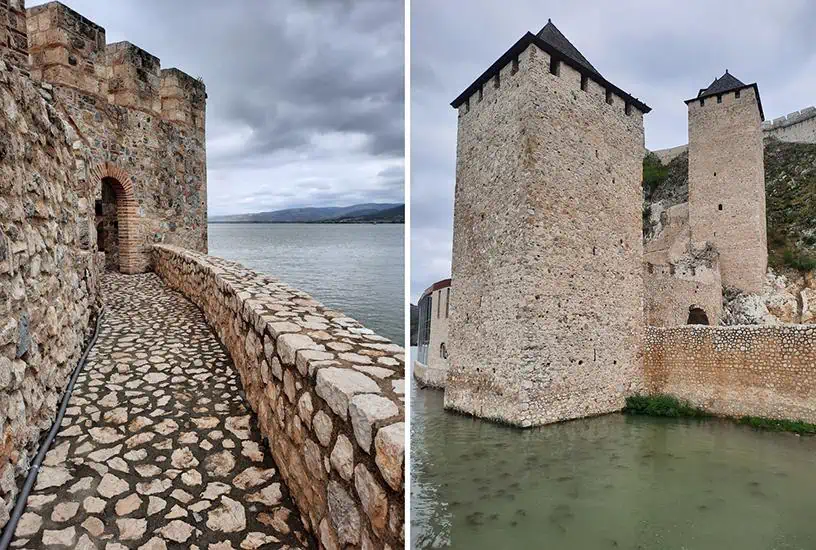
photography by: Omri Westmark
The Cannon Tower originally had an orthogonal base that was afterward reinforced with octagonal fortification, designed particularly for cannons.
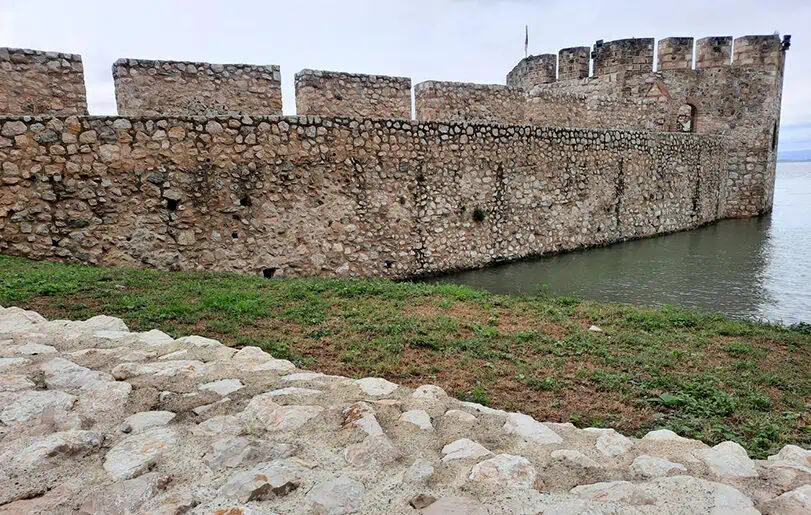
photography by: Omri Westmark
Once used for targeting warships with heavy artillery, the Cannon Tower’s embrasures provide some interesting perspectives of both the river and the fortress.
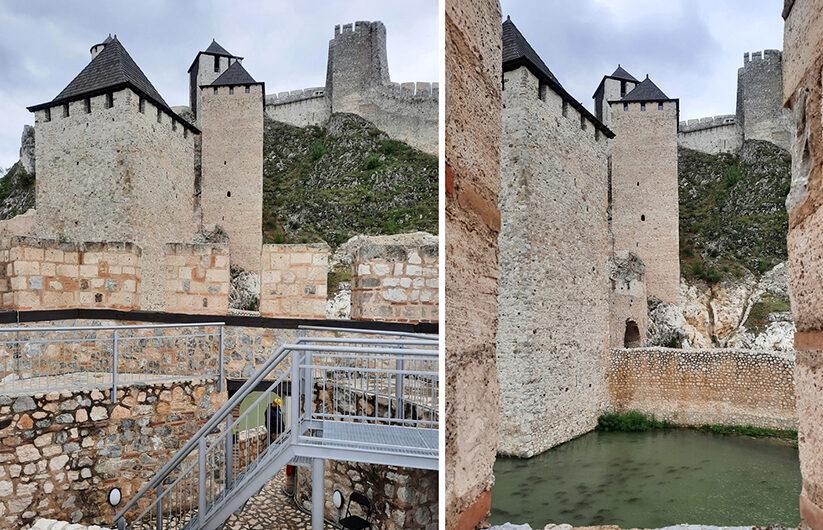
photography by: Omri Westmark
The medieval complex is divided into five zones, while four of them correlate to a different type of physical fitness that is entailed to successfully complete the trail.
1 – Lower degree of difficulty
2 – Medium difficulty
3 – High difficulty
4 – Extremely high difficulty
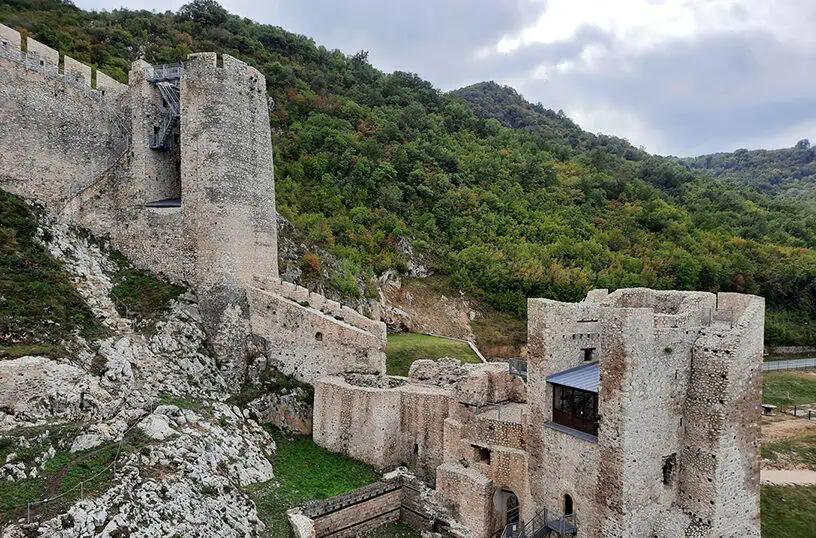
photography by: Omri Westmark
The trail to Tower No.7 (on the left side) and then Tower no.6 (second from left) is part of the high difficulty zone, which tends to be closed during or following rainy days as a safety precaution.
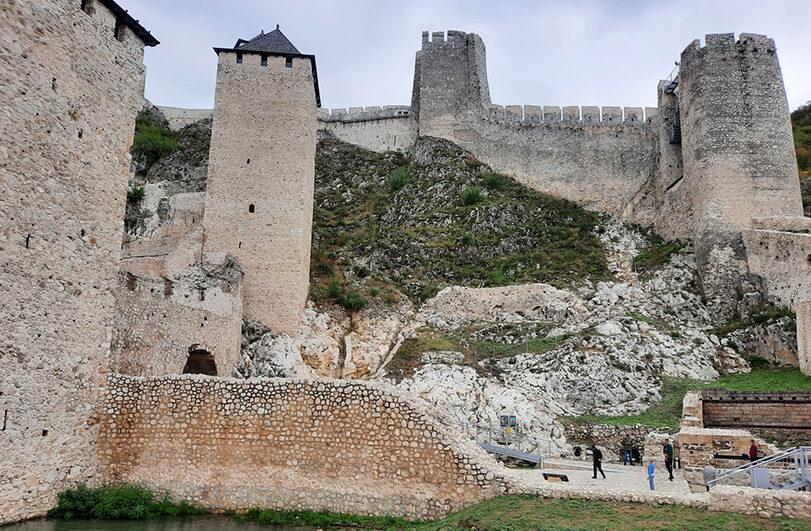
photography by: Omri Westmark
From left to right: Tower no.7, Tower no.6, Tower no.3, Tower no.4 and ultimately Tower no.1, also known as the Hat Tower. The latter is not only the tallest tower among its counterpart medieval skyscrapers, but also the oldest, built as part of the upper compound in the inner fort. Whereas its base is polygonal, it soars upwards circularly.
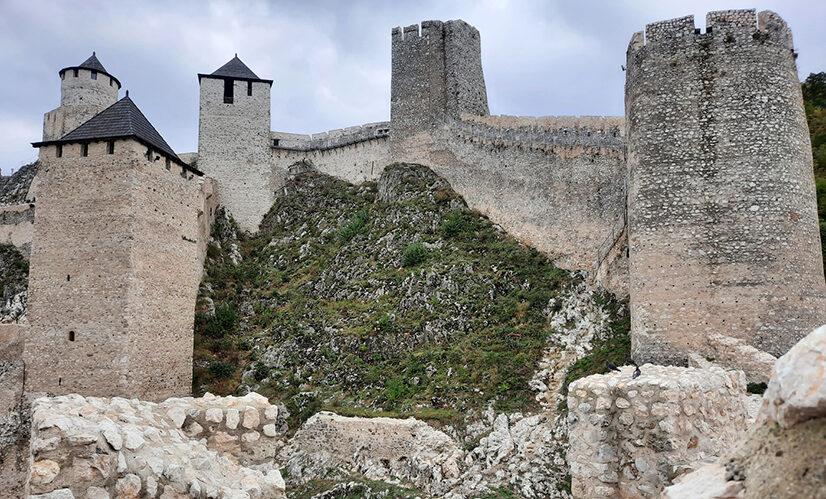
photography by: Omri Westmark
The Hat Tower is located on the highest point along the cliff, therefore the pathway to the tower is classified as an extremely high difficulty zone, definitely not for the faint hearted.
On the other hand, climbing the staircase around Tower no.5 is part of the lower degree of difficulty zone, and is open regardless of weather conditions.
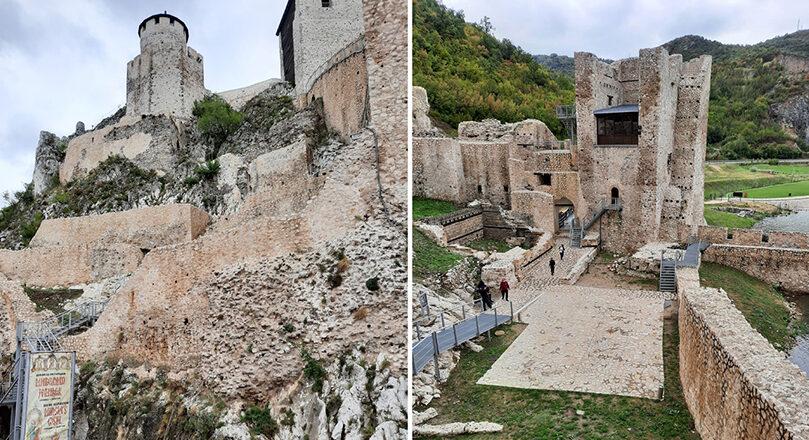
photography by: Omri Westmark
The tile-roofed edifice is Golubac Palace, located in the lower compound of the inner fort, next to the semi-ruined Tower no.2. Constructed during the reign of Stefan Lazarević, the palace originally consisted of three levels, a basement for storage, a ground floor for public purposes and a second floor that served as the residence of the fortress garrison.
As a result of the Djerdap dam, the two lower stories are underwater since the 1970’s, with only the second floor left intact. As of today, the remnants of the palace are frequently used for exhibitions and explanatory sessions.
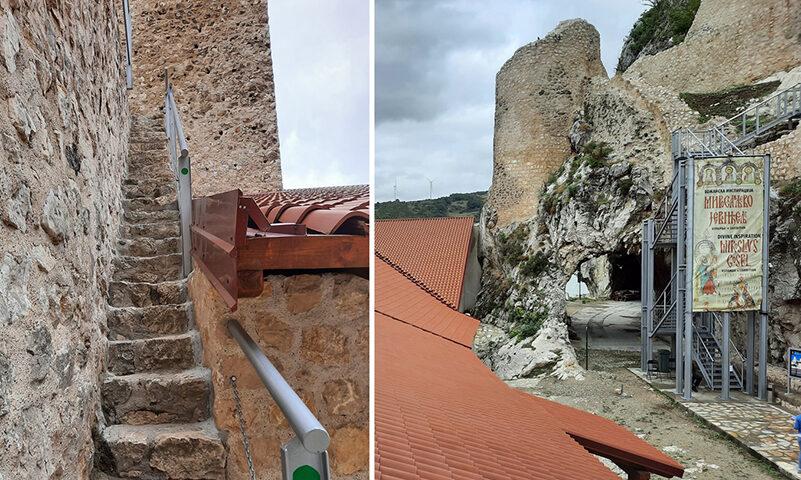
photography by: Omri Westmark